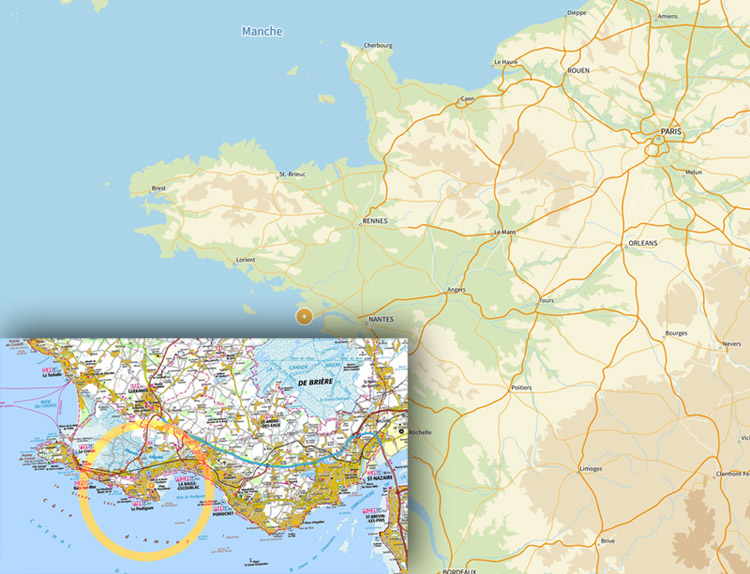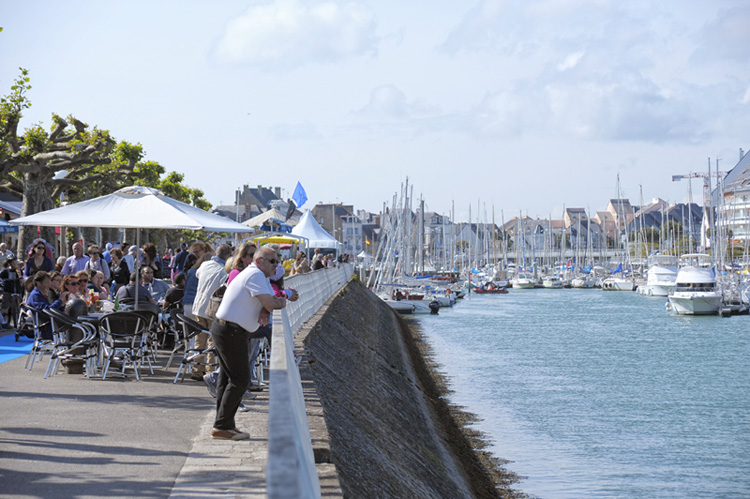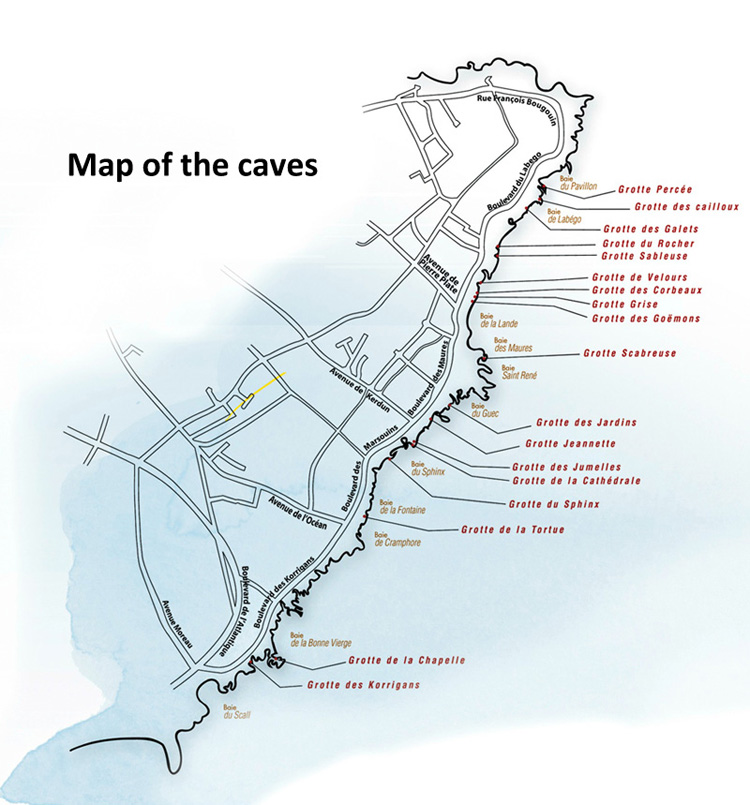On the Guérande peninsula, and a few steps from La Baule, Le Pouliguen is a family seaside resort shaped by history. Its promenade of the port, entirely pedestrianized, is an essential place: shops, rides, but also waffles and ice creams are an incentive to the pleasure of flavors. We wander there with family and friends, also to contemplate the comings and goings of the boats. Another setting, another charm, with a stroll on the wild coast: breathtaking, magical, with its coves, caves and shimmering colors.

The port of Pouliguen owes its development, from the Middle Ages, to the transport of salt produced in the salt marshes of Guérande. The Pouliguen stall supplied a large part of the salt basin and allowed the salt to be evacuated and transported.
The salt trade was intended for export and, along with fishing, was the port's main activity. A salt refinery operated on the left bank and a tide mill on the right bank.
In the 19th century, the transport of salt disappeared but seaside tourism developed with the arrival of the railway in 1879. Pouliguen then became a family seaside health resort.
The Promenade offers a superb view of the port, the Nau beach and the bay of La Baule. In the evening, the fairground atmosphere reigns with the rides, ice cream parlors and confectioners. In summer, let yourself be charmed by the lively musical evenings from the terraces by the water ...

At the end of the Promenade, the Ocean! Nau beach is a family beach. During low tide, the Plage du Nau is popular for shore fishing, especially for its seashells. At the end of the beach, the Hôtel de Ville de Brécéan is representative of 19th century seaside architecture: this chalet is designed in the spirit of a small Louis XIII-style castle.
23 caves shaped by erosion run along this coast, some of curious shapes, such as Le Rocher des Corbeaux (Crows rock) near Pierre Plate (Flat stone) which represents an enormous granite mass surrounded by the sea at each tide. Some caves are easily accessible, such as la baie de Convert and la baie de Guec, or others have steeper paths.
Surrounded by cliffs, Convert beach is ideal for relaxation. La baie de Guec, made up of several coves and la grotte des Jumelles (Cave of the twin sisters), is perfect for swimming and exploring. One of the prettiest, Pierre Plate cove is nicknamed "Tahiti beach"!
The wild coast of Pouliguen is steep except at Pierre Plate. This fairly extensive rock slopes gently down to the sea. It is divided into three parts by enormous grooves. When the waves come in, the rock seems to rumble! It is called La Pétouse or Trou du Diable (Devil hole).
Between boulevard des Maures and boulevard des Marsouins, the bay of the Sphinx owes its name to a rock vaguely reminiscent of this mystical animal; unfortunately the part representing the head came off several years ago. Next to it is the cave of the Sphinx.
At the entrance to this bay is the cave of the Binoculars, the most curious and picturesque. It is accessed by two passages in the form of corridors. Between these openings is the astonishing "Cathedral". The upper part of this cave features a mix of pink and green and the interior is dotted with red streaks.
Of all the caves, that of the Korrigans remains the most famous. It is accessible by a staircase with spaced steps. According to legend, this cave was frequented by korrigans, little black and lively beings, indulging in mysterious occupations at night ... A magic word would suffice for the cave wall to open and reveal dazzling treasures ...
At the bottom of this cave, there is an underground conduit leading to Guérande in which the Korrigans make visitors who are too curious to disappear!

Thanks to La Baule - Presqu'île de Guérande website





